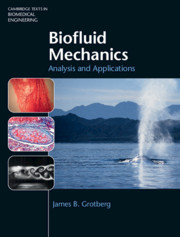Refine search
Actions for selected content:
36901 results in Cambridge Textbooks
Chapter 10 - Asia and Australia’s engagement with Asia
- from Part 4 - Making connections
-
-
- Book:
- Teaching Secondary History
- Published online:
- 15 October 2021
- Print publication:
- 22 November 2021, pp 227-250
-
- Chapter
- Export citation
Acknowledgements
-
- Book:
- Teaching Secondary History
- Published online:
- 15 October 2021
- Print publication:
- 22 November 2021, pp xi-xiii
-
- Chapter
- Export citation
6 - The heart of nursing
- from Part 2 - Becoming
-
-
- Book:
- The Road to Nursing
- Published online:
- 28 February 2022
- Print publication:
- 22 November 2021, pp 104-125
-
- Chapter
- Export citation
Chapter 12 - Professional networks
- from Part 4 - Making connections
-
-
- Book:
- Teaching Secondary History
- Published online:
- 15 October 2021
- Print publication:
- 22 November 2021, pp 266-278
-
- Chapter
- Export citation
13 - Being a safe and ethical practitioner
- from Part 2 - Becoming
-
-
- Book:
- The Road to Nursing
- Published online:
- 28 February 2022
- Print publication:
- 22 November 2021, pp 252-266
-
- Chapter
- Export citation
4 - Health systems and models in Australia
- from Part 1 - Beginning
-
-
- Book:
- The Road to Nursing
- Published online:
- 28 February 2022
- Print publication:
- 22 November 2021, pp 56-75
-
- Chapter
- Export citation
Frontmatter
-
- Book:
- Teaching Secondary History
- Published online:
- 15 October 2021
- Print publication:
- 22 November 2021, pp i-iv
-
- Chapter
- Export citation
Chapter 2 - Knowledge, historical thinking and skills
- from Part 1 - What is history?
-
-
- Book:
- Teaching Secondary History
- Published online:
- 15 October 2021
- Print publication:
- 22 November 2021, pp 26-47
-
- Chapter
- Export citation
5 - Health care in Australia
- from Part 1 - Beginning
-
-
- Book:
- The Road to Nursing
- Published online:
- 28 February 2022
- Print publication:
- 22 November 2021, pp 76-102
-
- Chapter
- Export citation
18 - Conclusion: What now? Where to from here?
- from Part 3 - Being
-
-
- Book:
- The Road to Nursing
- Published online:
- 28 February 2022
- Print publication:
- 22 November 2021, pp 353-366
-
- Chapter
- Export citation
Figures and tables
-
- Book:
- The Road to Nursing
- Published online:
- 28 February 2022
- Print publication:
- 22 November 2021, pp xi-xi
-
- Chapter
- Export citation
1 - The journey begins
- from Part 1 - Beginning
-
-
- Book:
- The Road to Nursing
- Published online:
- 28 February 2022
- Print publication:
- 22 November 2021, pp 2-16
-
- Chapter
- Export citation
2 - Contemporary nursing education
- from Part 1 - Beginning
-
-
- Book:
- The Road to Nursing
- Published online:
- 28 February 2022
- Print publication:
- 22 November 2021, pp 17-40
-
- Chapter
- Export citation
Index
-
- Book:
- Teaching Secondary History
- Published online:
- 15 October 2021
- Print publication:
- 22 November 2021, pp 279-290
-
- Chapter
- Export citation

Quantum Mechanics
-
- Published online:
- 19 November 2021
- Print publication:
- 21 October 2021
-
- Textbook
- Export citation

Biofluid Mechanics
-
- Published online:
- 19 November 2021
- Print publication:
- 22 July 2021
-
- Textbook
- Export citation
10 - Surrogate-Based Optimization
-
- Book:
- Engineering Design Optimization
- Published online:
- 05 January 2022
- Print publication:
- 18 November 2021, pp 373-422
-
- Chapter
- Export citation
8 - General and Security Exceptions
-
- Book:
- The Law and Policy of the World Trade Organization
- Published online:
- 25 November 2021
- Print publication:
- 18 November 2021, pp 591-688
-
- Chapter
- Export citation
10 - Regional Trade Exceptions
-
- Book:
- The Law and Policy of the World Trade Organization
- Published online:
- 25 November 2021
- Print publication:
- 18 November 2021, pp 730-753
-
- Chapter
- Export citation
Abbreviations
-
- Book:
- The Law and Policy of the World Trade Organization
- Published online:
- 25 November 2021
- Print publication:
- 18 November 2021, pp xlvii-l
-
- Chapter
- Export citation
